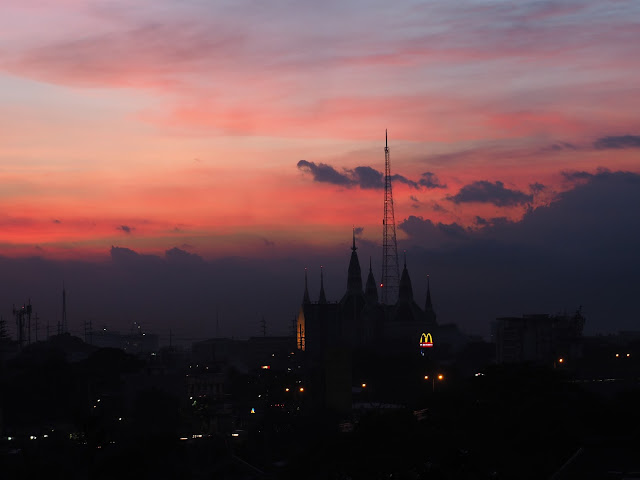My trip to Albay on 12-14 December, this week, paved way to give me some shooting chances despite the distance. Our destination is on its west side, but the airport is on its South side. At least i was able to watch it with those angles. They say it is seldom seen clear without clouds. But in the early mornings or dawn and at dusk, clouds left letting us gaze at its splendor, majestic beauty.
This is the view from the guesthouse window at 8:00 in the morning. The clouds are already coming in and covered it in a few minutes.
On our 2nd day i woke up before 6:00 am to watch it. I went to an upland area within the Coconut Research Center's campus, and the view didn't fail me. There is always some clouds coming out of its crater, as shown in the above photo.
a wide angle shot before sunrise from the same spot
another shot showing the other hill in the foreground and the coconut plantations
This view is just in front of the guest house where we stayed for 2 nights. I shot this from the driveway.
This is the small hill at its west side, almost developing to have another perfect cone. Mt Mayon is at the back overexposed.
Another hill at the left side of Mayon also trying to mimic its shape. I wonder if this is also a volcano trying to have another perfect cone with the eruptions.
A wider angle shot of Mt Mayon
This is the view at 8:00 am on our way to the airport, shot from the highway almost at the south side.
Finally, this is shot at the pre-departure area in Legaspi City Airport. The clouds are already coming in, and after a few minutes it cannot be seen anymore until our very much delayed flight left at 2:30 in the afternoon. We are very lucky to have been given the chance to see it clear. But of course i also took chances to see it when it is clear, I woke up early just for it. Thanks Mt Mayon you didn't disappoint me.


































































